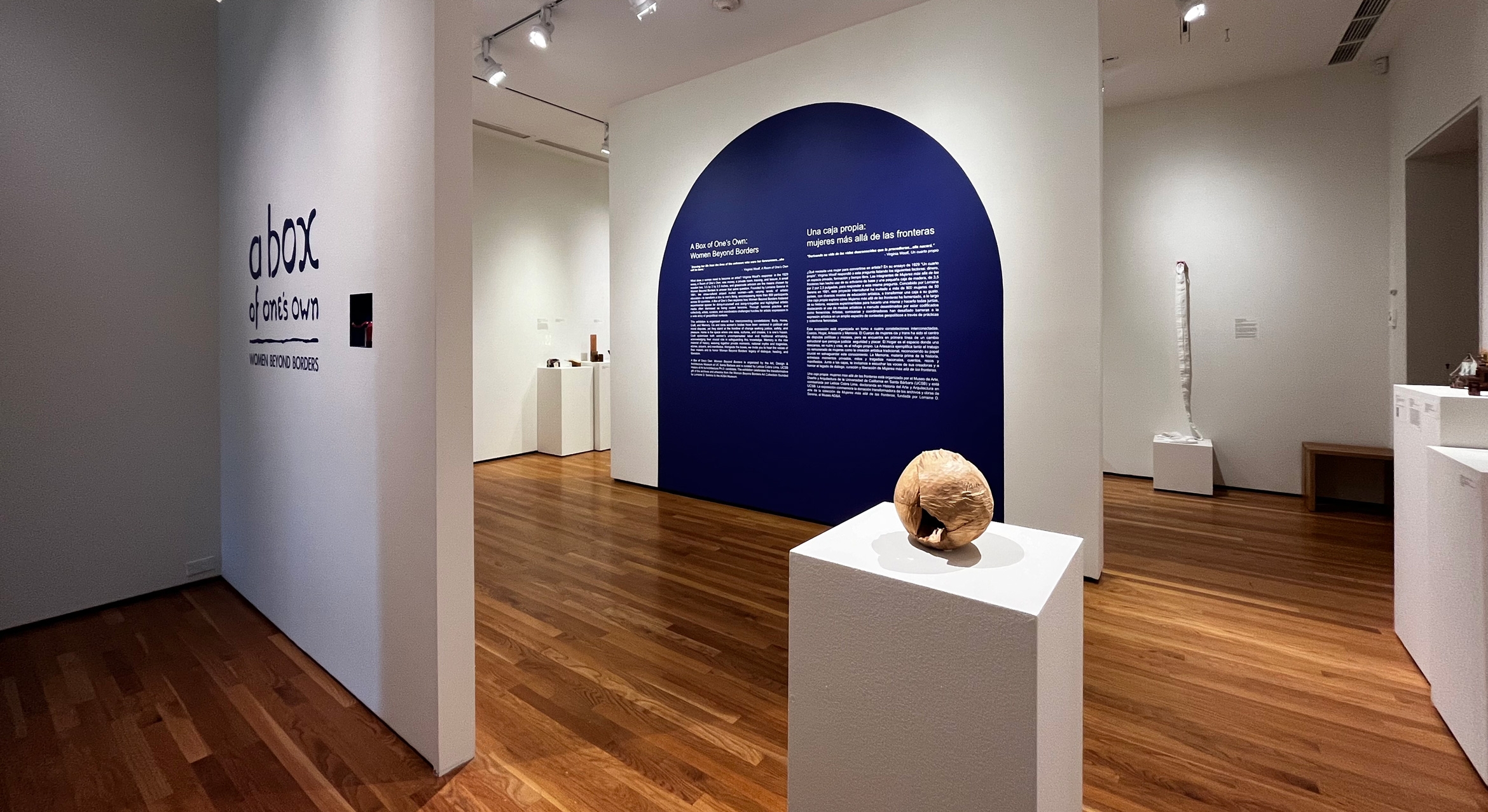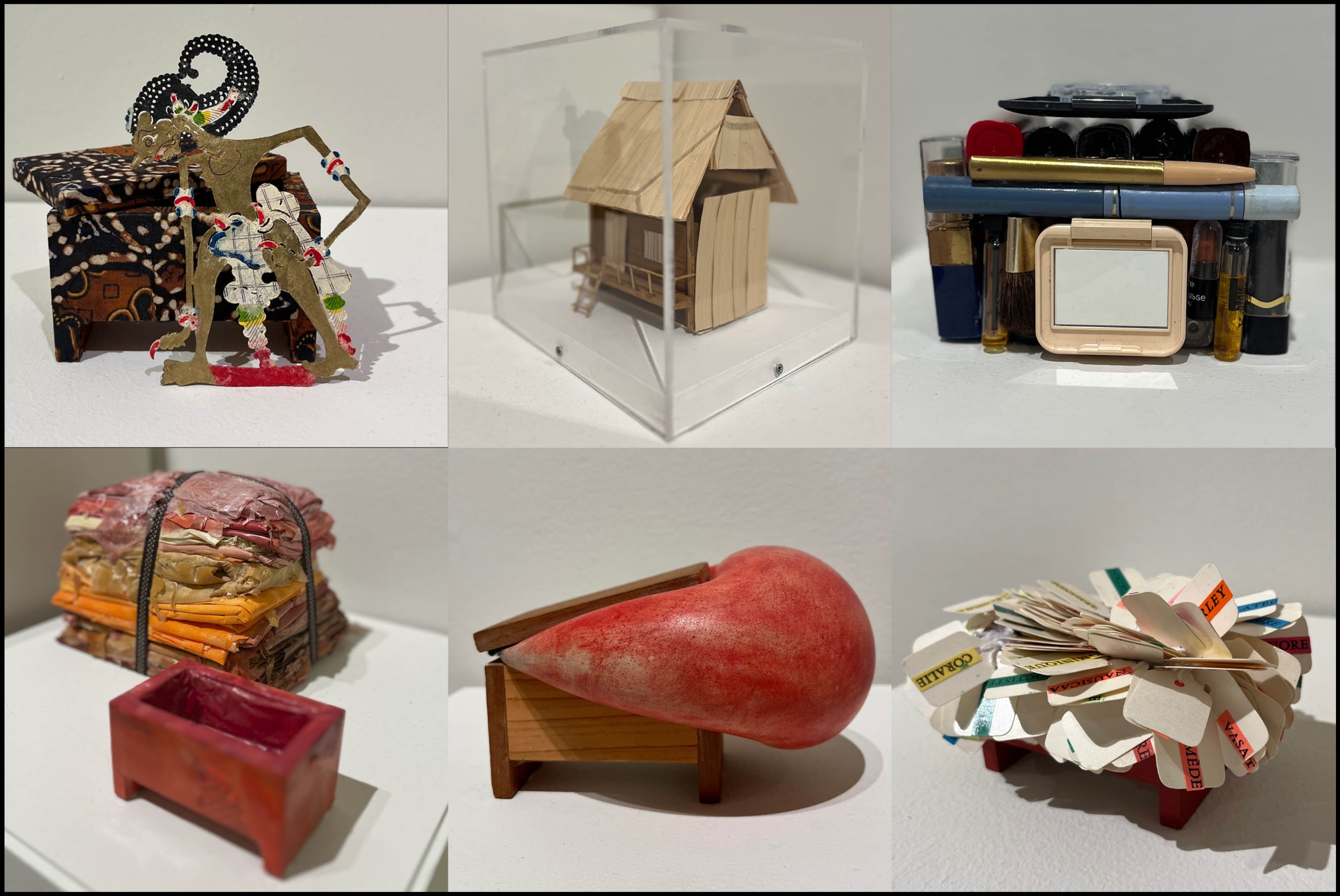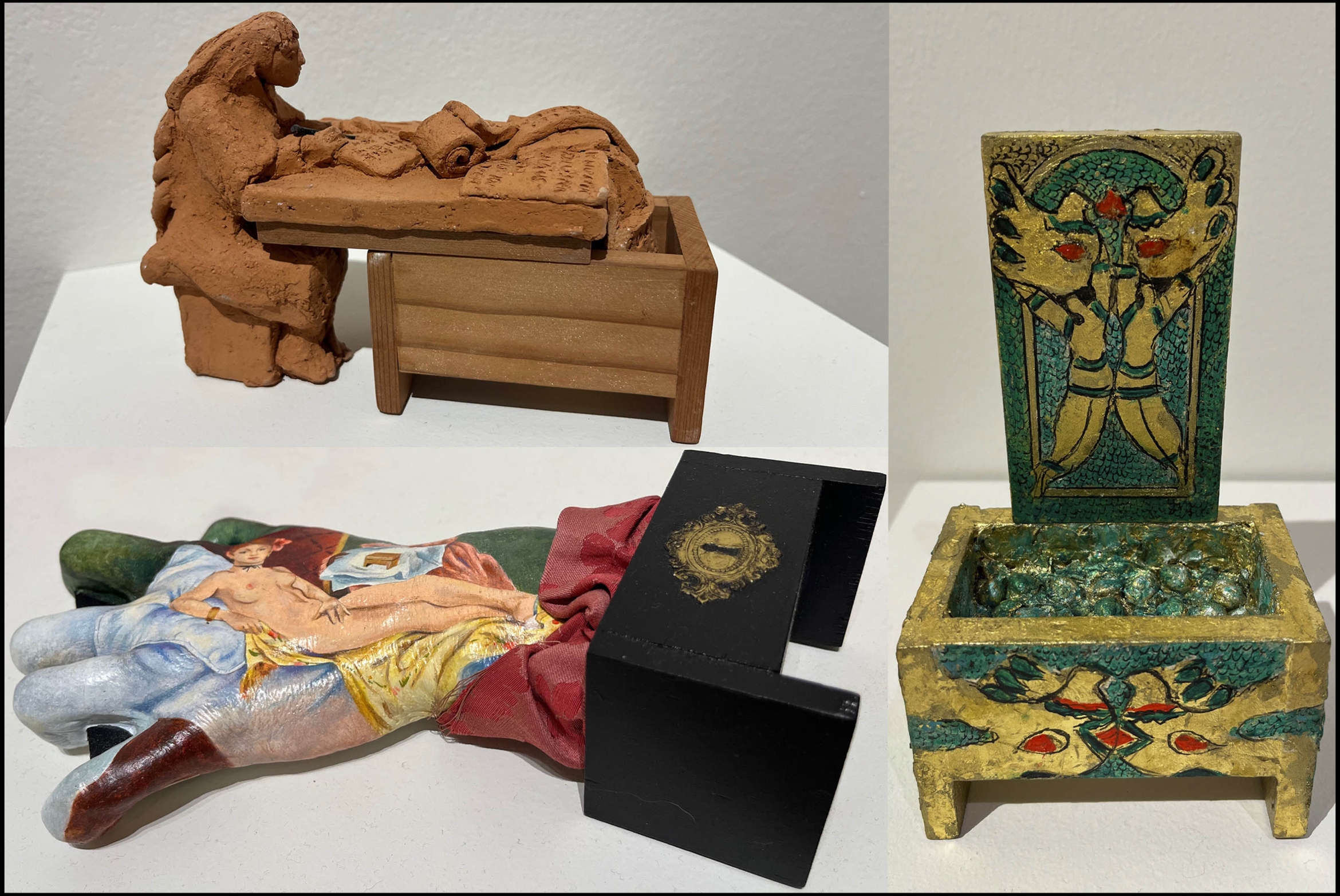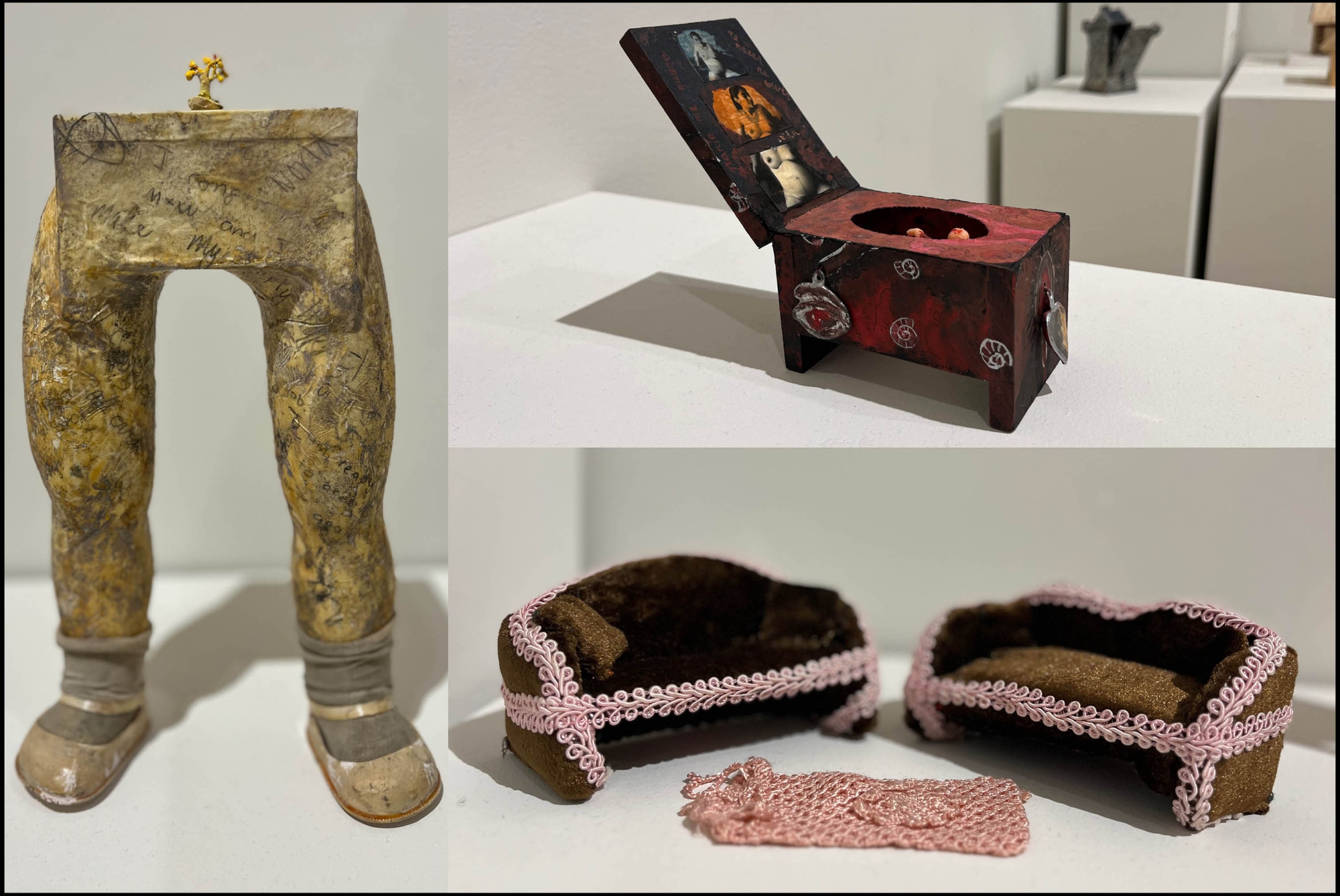
Art show ‘A Box of One’s Own’ refashions Woolf’s ‘room’ in small symbols of women’s empowerment
What does a woman need to create art?
“A woman must have money and a room of her own,” argued Virginia Woolf in 1929. Her words resonated through continents and generations, landing in 1991, with Lorraine Serena, BA ’59, MA ’61, an art student at UC Santa Barbara. Inspired, she founded the cross-cultural project Women Beyond Borders (WBB), inviting women to transform a small wooden box into an expression of oneself. Today, WBB has visited over 50 countries and displayed over 900 boxes.
Now, the Art, Design & Architecture Museum brings the artivist project back to UCSB in the exhibition “A Box of One’s Own: Women Beyond Borders” (Jan. 25 – May 5) which explores how WBB contributes to a greater understanding of women’s lives and cultures through art.

“‘A Box of One’s Own’ explores how WBB fostered experimental spaces for doing-it-yourself and doing-it-together and highlighted artistic media often dismissed as being coded feminine,” said Letícia Cobra Lima, a doctoral candidate in UCSB’s Department of History of Art & Architecture and the show’s curator. Through collective feminist practice, she added, WBB’s artists, curators and coordinators helped break down barriers for women’s artistic expression in numerous geopolitical contexts.
In addition to WBB’s founder, Serena, being a UCSB alum, the project has deep ties to the Santa Barbara community. WBB’s premier exhibition in 1995 was at the Santa Barbara Contemporary Arts Forum (CAF, now the Museum of Contemporary Art Santa Barbara). At the time, Nancy Doll, the museum’s director said the show connected women’s visions “at the end of a century which had seen their struggle for rights and freedoms;” and the poet Valentina Grup-Kruip wrote, “I could feel the women whispering, like clocks ticking, like all these wild, intentional undone heartbeats.” WBB returned to CAF in 1999. In 2002 it was exhibited at UCSB’s University Art Museum (now the AD&A Museum) in a 10th anniversary retrospective curated by the museum’s director at the time Marla Berns and Anette Kubitza, then a doctoral student at the University of Hamburg.
After a recent donation of the Women Beyond Borders art collection and archive to the AD&A Museum by Lorraine and Frank Serena, Cobra Lima, who is also the graduate curator of education, was invited to curate an exhibition celebrating WBB’s history and legacy. Having engaged in feminist scholarship, collage and assemblage art throughout her academic and professional career, she set out to explore the influence of WBB’s global project, interviewing Serena, Kubitza and many other WBB participants around the world.

“Lorraine and Frank — through invitation, workshops and exhibitions — provided purpose, space and resources for artmaking in diverse, sometimes troubled, geopolitical contexts, with the support of local cultural agents, and in so doing, fostered a community around the globe that remembers Women Beyond Borders fondly for its capacity of inciting change and dialogue,” said Cobra Lima. The boxes in themselves are complex artworks, which taken altogether reference collectivity and inclusion.
The exhibition is organized around the themes of body, home, craft and memory, as explained in the exhibition notes. Cis and trans women’s bodies have been centered in political and moral disputes, it states, “yet they stand at the frontline of change seeking justice, safety and pleasure.” Home is the space where one rests, nurtures and creates — “it is one’s haven.” Craft is characterized by women’s uncompensated labor and traditional artmaking, “acknowledging their crucial role in safeguarding this knowledge.” And, memory is “the raw material of history, weaving together private moments, national myths and tragedies, stories, prayers and manifestos.”
Cobra Lima identified the themes as she considered the archive of works, finding, for example, the motif of women’s bodies in boxes that referenced being born, giving birth, having sex and aging. Other boxes depicted the body as it faced war, violence or disease.

“It goes to show that if my generation has seen a lot of advances with regards to cis and trans women’s bodily autonomy and safety around the world, there is still much work to be done, as many of the issues and struggles seen in such boxes are still ongoing,” she said. “Sandra Ramos Lorenzo in ‘Aves Migratorias,’ for instance, puts a winged woman in a suitcase, in the frozen action of protecting or fleeing her nest, which I interpret as a reflection on forced displacement — a hardship encountered by many in our day and age.”
Speaking to the impact of WBB, Cobra Lima pointed to how initiatives that focus on collective learning and amplifying women’s voices help advance difficult conversations and can lead to positive change in small and large ways and on the local and global stage.

“I hope visitors walk away from the show understanding solidarity, community and creativity as motors of change, and that art is not only possible, but necessary, in the face of injustice, violence and scarcity,” she added. “The women’s voices echoing in the gallery, particularly those of women of color, speak to peace and freedom as a result of action, not conformity, to undo biases, and to respect one another’s right to life, happiness, expression and memory.”
Cobra Lima’s hope echoes Serena’s 1996 “A Prayer for Transformation,” where she called viewers to action “Beyond destruction, jealousy, rage, hatred, separation, revenge. Toward creation, compassion, reconciliation, transformation.”
"A Box of One's Own: Women Beyond Borders" is on view at the AD&A Museum until May 5, 2024. The museum is open Wednesday to Sunday from noon to 5 p.m.
Debra Herrick
Associate Editorial Director
(805) 893-2191
debraherrick@ucsb.edu



